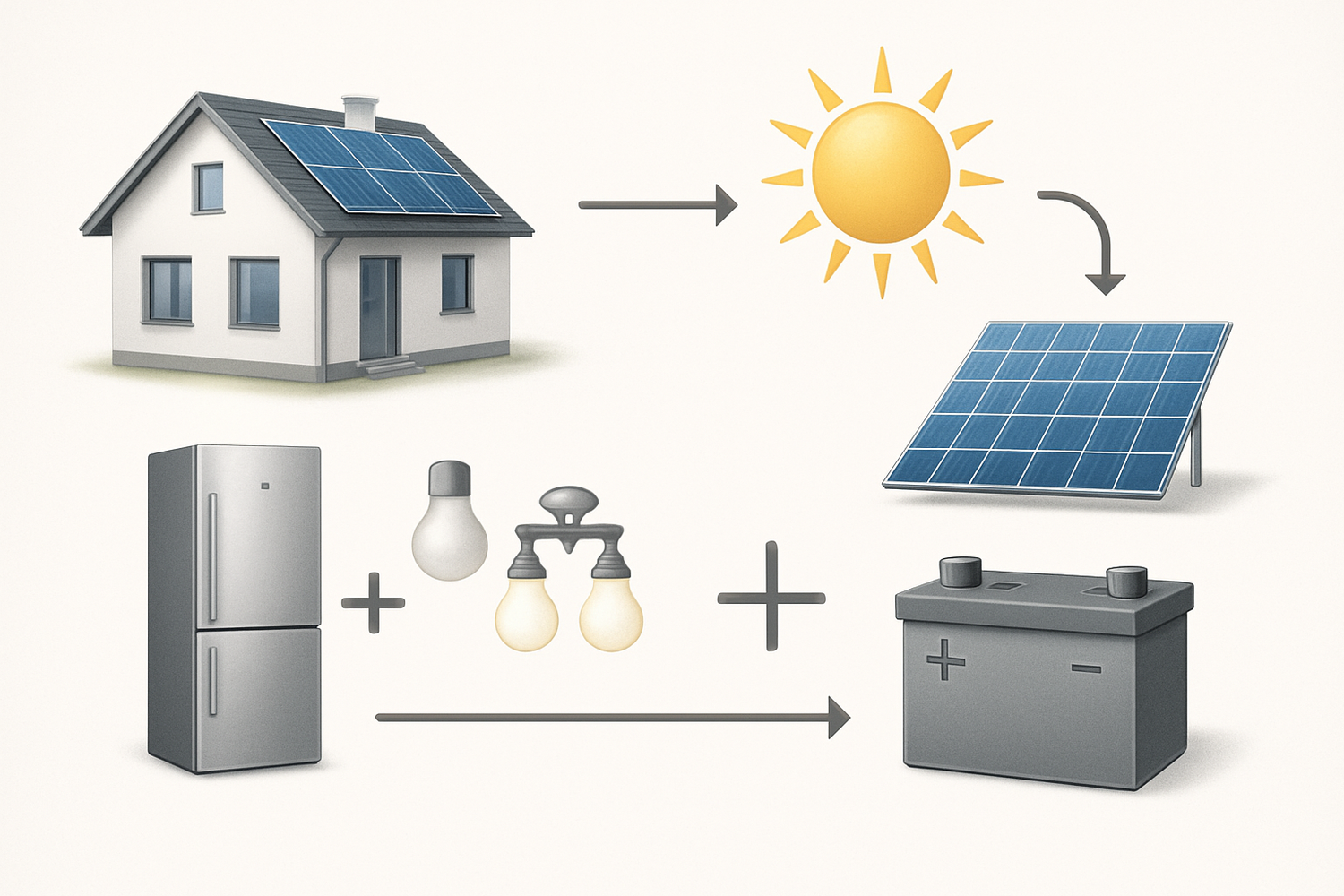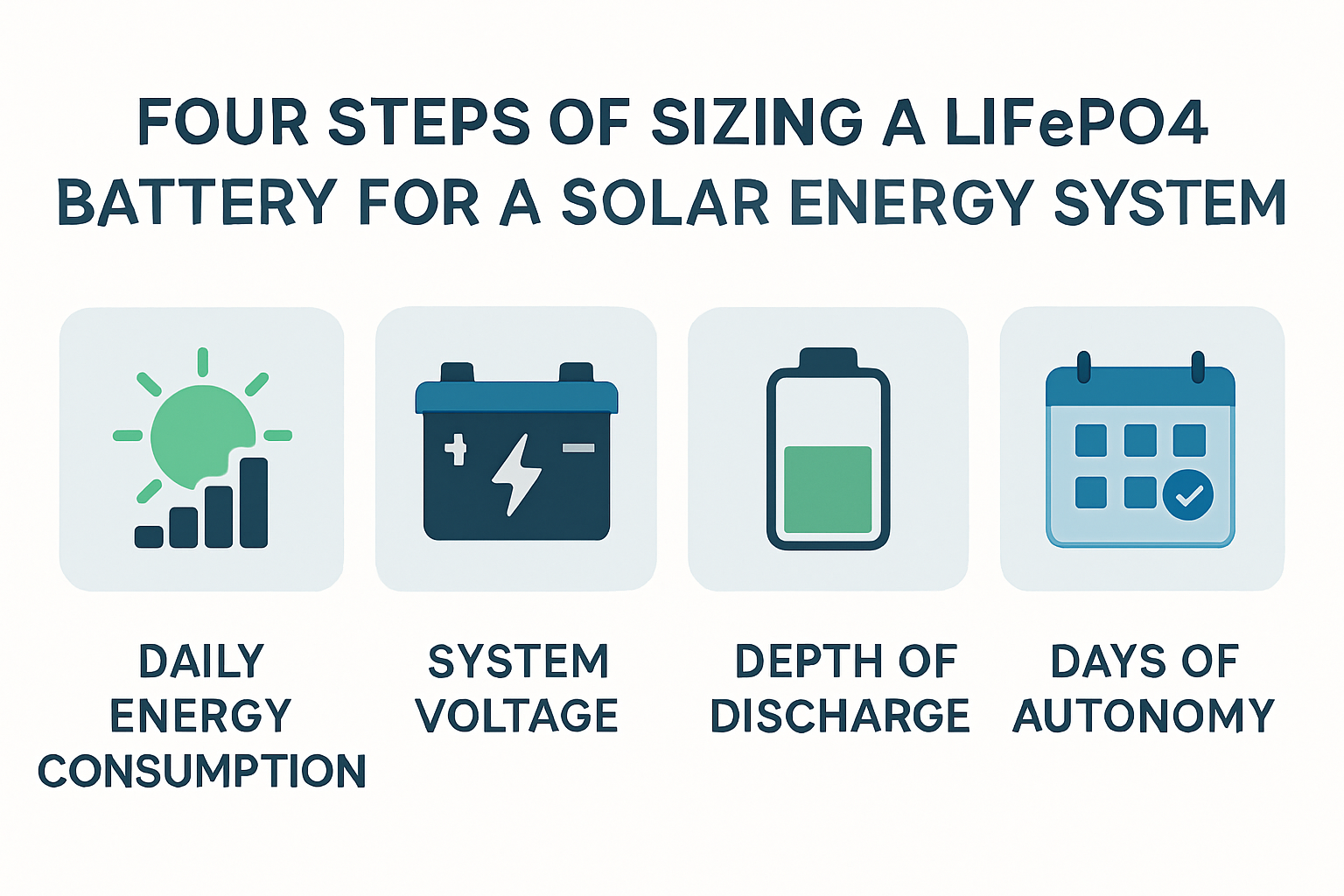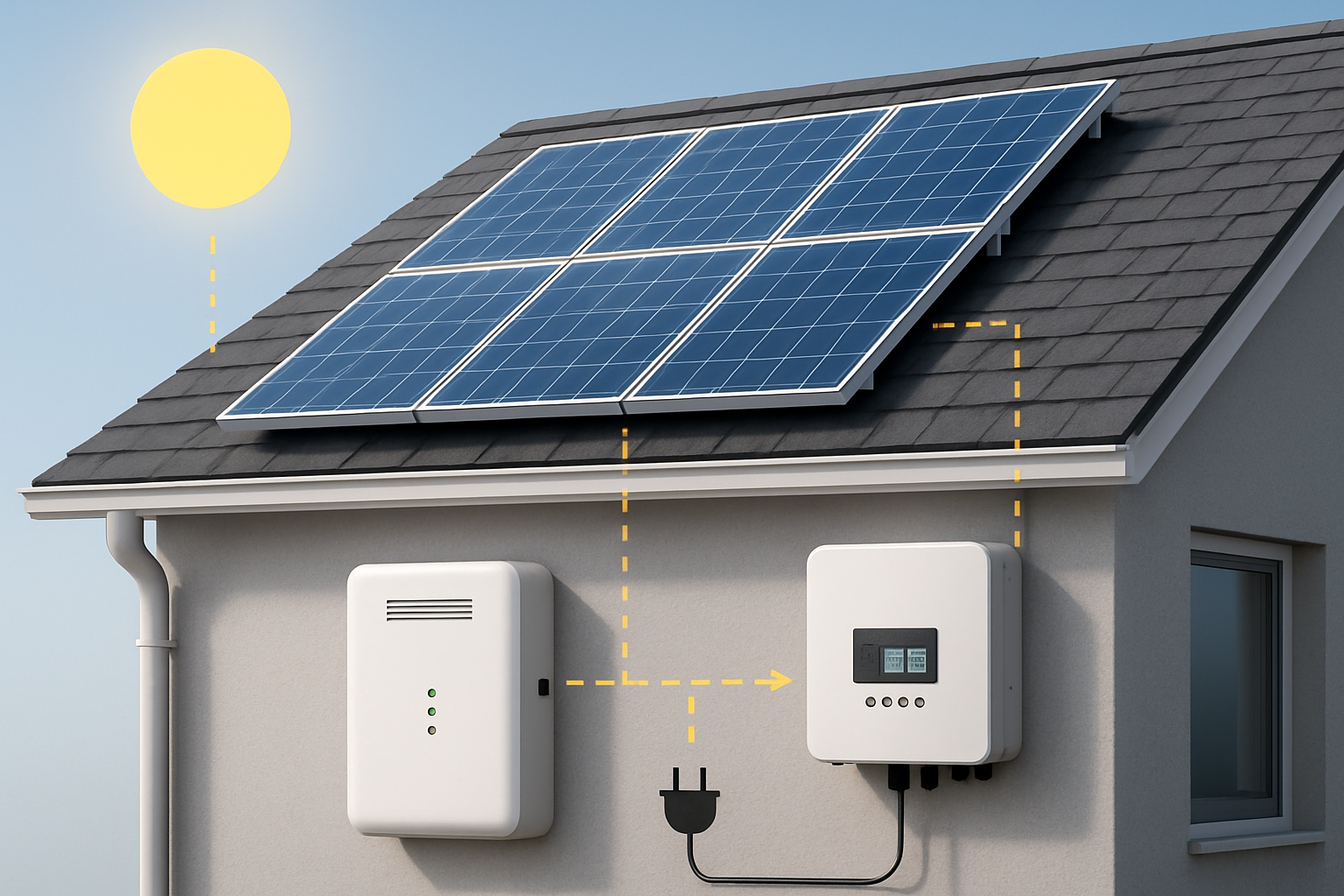Choosing the right size for your solar battery is one of the most critical steps in designing a home energy storage system. A battery that is too small will leave you without power when you need it most. One that is too large can be an unnecessary expense. This guide provides a clear, step-by-step method to calculate your solar battery requirements, ensuring your system is efficient, reliable, and perfectly matched to your needs.
Understanding the Core Metrics of Battery Sizing
Before you can use a solar battery size calculator, it's important to understand the fundamental terms that define a battery's capacity and performance. Getting these concepts right is the foundation for an accurate calculation.
Kilowatt-Hours (kWh): Measuring Your Energy Storage
Kilowatt-hours (kWh) measure the total amount of energy a battery can store. Think of it as the size of your energy 'tank'. To size your battery correctly, you first need to know how much energy your home uses. The average U.S. home consumes about 28-30 kWh per day, but this varies significantly based on location, home size, and lifestyle. Your goal is to determine the kWh required to power your essential appliances during an outage or overnight.
Kilowatts (kW): Gauging Your Power Demand
Kilowatts (kW), on the other hand, measure power—the rate at which energy is used. A battery needs a high enough kW rating to deliver power to all your essential appliances running simultaneously. For example, starting a well pump requires a significant surge of power (high kW), even if it only runs for a few minutes and consumes a small amount of energy (low kWh).
Depth of Discharge (DoD) and Usable Capacity
A battery's listed capacity isn't the same as its usable capacity. The Depth of Discharge (DoD) is the percentage of the battery's total capacity that can be safely used without degrading its lifespan. Modern Lithium Iron Phosphate (LiFePO4) batteries offer a significant advantage here, with recommended DoD levels often between 80% and 100%. This means with a 10 kWh LiFePO4 battery, you can safely use 8 to 10 kWh of energy. In contrast, traditional lead-acid batteries typically have a DoD of only 50%.
A Step-by-Step Guide to Calculating Your Battery Needs
Now, let's walk through the calculation process. This method ensures you account for all the critical variables for an accurate home solar battery sizing.
Step 1: Create a Detailed Load Profile
Your utility bill gives you a monthly average, but for accurate sizing, you need to know what you'll power during an outage. Make a list of your essential appliances. Note their wattage (power) and the number of hours you expect to run them each day. Multiply the wattage by the hours to find the watt-hours (Wh) for each device, then add them all up and divide by 1,000 to get your total daily kWh consumption.
Step 2: Determine Your Desired Days of Autonomy
Days of autonomy refers to the number of consecutive days you want your battery to power your home without any recharging from your solar panels. This is a crucial consideration for areas with frequent grid outages or long periods of cloudy weather. For most residential applications, 1 to 2 days of autonomy is a practical target.
Step 3: Factor in System Inefficiencies
Energy is lost during the conversion from DC power (stored in the battery) to AC power (used by your appliances). This is accounted for by the inverter's efficiency. Additionally, batteries lose a small amount of energy during charging and discharging cycles. A general rule is to factor in about a 10-15% loss, meaning your system efficiency is around 85-90%.
Step 4: The Sizing Formula
With the numbers from the previous steps, you can use a simple formula to calculate your required battery capacity:
Required Battery Capacity (kWh) = (Total Daily kWh Consumption × Days of Autonomy) / (Battery DoD × System Efficiency)
Putting the Calculator to Work: A Real-World Example
Let's imagine a homeowner who wants to back up their essential loads for one day. Here is their load profile:
| Appliance | Power (Watts) | Daily Hours of Use | Daily Energy (Wh) |
|---|---|---|---|
| Refrigerator | 200 W | 8 hours (cycling) | 1600 Wh |
| LED Lights (5) | 50 W | 6 hours | 300 Wh |
| Internet Router | 10 W | 24 hours | 240 Wh |
| Well Pump | 1000 W | 1 hour | 1000 Wh |
| Phone Chargers | 20 W | 4 hours | 80 Wh |
| Total | 3220 Wh or 3.22 kWh |
Now, let's apply the formula, assuming they choose a LiFePO4 battery with a 90% DoD and the system has an 85% efficiency:
- Daily kWh Consumption: 3.22 kWh
- Days of Autonomy: 1
- Battery DoD: 0.90
- System Efficiency: 0.85
Required Capacity = (3.22 kWh × 1) / (0.90 × 0.85) = 3.22 / 0.765 ≈ 4.21 kWh
In this case, a 5 kWh battery would be a suitable choice, providing a safe buffer without being oversized.
Advanced Sizing Considerations for Optimal Performance
A basic calculation provides a great starting point, but a few other factors can help you refine your choice for a truly optimized system.
Matching Battery Size to Your Solar Array
Your solar array must be large enough to power your home during the day and fully charge your battery. A common rule of thumb is a 1:1 to 2:1 ratio of solar panel wattage to battery capacity in amp-hours, but this is highly dependent on your location's peak sun hours. An undersized solar array will struggle to charge a large battery, especially during winter months, diminishing the battery's effectiveness.
Scalability and Future-Proofing Your Investment
Your energy needs might change. You might buy an electric vehicle or add an electric heat pump. Modular energy storage systems offer the flexibility to expand your capacity later. Starting with a system that allows you to add more battery modules in the future is a smart way to protect your initial investment.
The Impact of Battery Chemistry
The type of battery you choose directly impacts sizing calculations. As mentioned, LiFePO4 batteries have become the standard for residential energy storage due to their high DoD, longer lifespan, and superior safety profile compared to other lithium-ion chemistries. For a deeper understanding of how different performance metrics affect your system, you can review this ultimate reference on solar storage performance.
Final Thoughts on Sizing Your System
Determining the right size for your solar battery isn't about finding a single magic number; it's about creating a balanced system that aligns with your energy goals, lifestyle, and budget. By carefully calculating your load requirements, planning for autonomy, and considering future needs, you can invest in a home energy storage solution that delivers reliable power and true energy independence for years to come.
Frequently Asked Questions
How many solar panels do I need to charge a 10 kWh battery?
The number of panels needed depends on their wattage and your location's average peak sun hours. For example, to charge a 10 kWh battery in a single day with 5 peak sun hours, you would need at least 2 kW of solar panels (10 kWh / 5 hours = 2 kW). It is often recommended to have a larger array to simultaneously power your home and charge the battery.
Can I just use my utility bill to size my battery?
While your utility bill is a good starting point for understanding your average overall consumption, it is not ideal for sizing a battery for backup power. The bill doesn't differentiate between essential and non-essential loads. A proper load calculation focusing only on critical appliances will give you a much more accurate and cost-effective battery size.
What happens if I undersize my solar battery?
An undersized battery will run out of power more quickly than you expect, potentially leaving you in the dark during an extended outage. It may also be subjected to deeper and more frequent discharge cycles, which can shorten its operational lifespan.
Is it better to oversize my battery?
Slightly oversizing can provide a welcome buffer, but significant oversizing is not cost-effective. You will pay for storage capacity that you rarely, if ever, use. Furthermore, if your solar array isn't large enough to consistently charge the oversized battery, you won't be able to take full advantage of your investment.
Disclaimer: The information provided in this article is for educational purposes only. It is not intended as financial or investment advice. Please consult with a qualified professional for guidance tailored to your specific situation.





Leave a comment
All comments are moderated before being published.
This site is protected by hCaptcha and the hCaptcha Privacy Policy and Terms of Service apply.